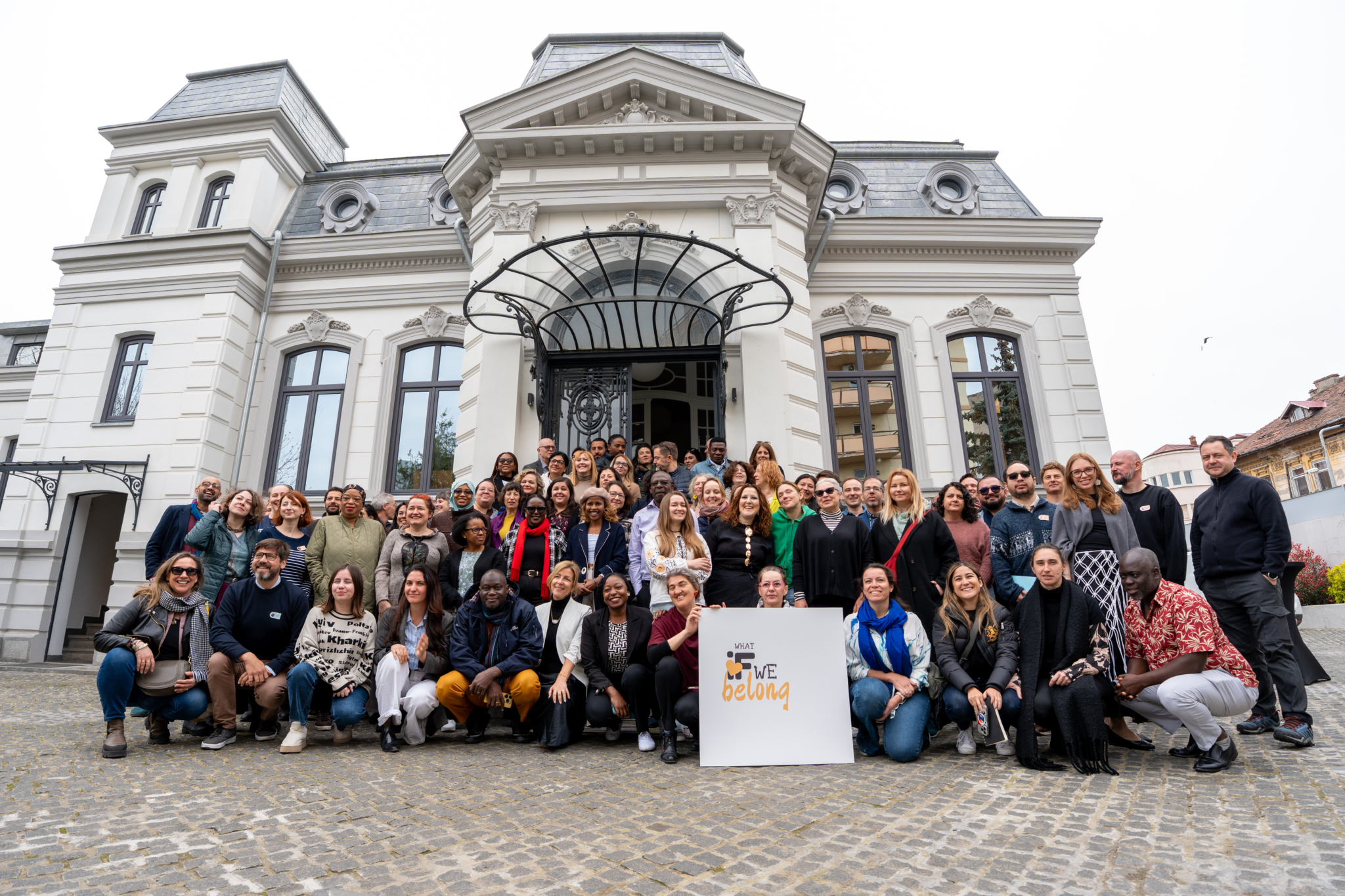Reimagineers of the future

Eleanor Cater
Philanthropy and Membership Services Director, CFANZ
27 May 2025
The intergenerational focus of community foundations, and the deep roots that they hold in communities, lends them towards being ‘reimagineers’ of the future of communities. In April, at Infrastructures for the Future (IFF25) in Bucharest, representatives from 35 countries, over 90 participants, explored how we reimagine the role of community foundations of the future.
Using the ‘3 horizons’ framework the summit explored the third horizon: how to build movements for change, the summit embodied the analogy of ‘building constellations, not stars’ and the need for network partners to build movements, sparking amplification and action.
Amidst the determination and joy that resonates from the authenticity of community foundation networks, I came away with five key reflections:
1`. Community foundations have a truly unique place in the ‘philanthrosphere’ and have the potential to influence the philanthropic culture of nations. Our work helps people discover transformative giving pathways and, since humans are wired for community and mutual solidarity and care, we can grow philanthropy in a way that no other purpose-driven structure can. Community-led foundations, which are close to their communities, are uniquely placed to nurture the wiring of humans as community beings and to steward new and transformative forms of philanthropy. Vertical philanthropy norms in the Western context don’t necessarily serve communities well, and community foundations around the world are proactively shifting philanthropy norms to more horizontal ways of thinking and doing. Often referred to as ‘shifting power’, community foundations do this in many ways, including skilled philanthropy advising, collective giving circles and emerging participatory practices.
2. We are social infrastructure and the true potential of this work stretches well beyond financial capital. We can, through our unique position, choose to be community weavers, building social cohesion and nurturing more connected communities (and notably where we build social cohesion, the concept of justice makes more sense, drawing communities together in solidarity).
Humans are wired as social animals to thrive in connected communities and emerging across the world are countless ways that community foundations are proactively safeguarding this crucial aspect of civil life. Examples from Romania included:
- Nodmaker Space, developed by Fundația Comunitară București (Bucharest Community Foundation) – a purpose-built facility that brings artists and creatives together and invites the whole community to share in the imagination and creativity of Bucharest. Nodmaker Space is also leading the charge to reconnect with the city’s key natural asset, its river, which has been under appreciated and underutilised.
- Fundatiei Comunitare Tara Făgărașului (Făgăraș Community Foundation) and their strategic development of youth leadership and the volunteering and giving culture of the region (in a country shaped by communism and a non-volunteering culture).
3. Thinking around endowment building is shifting. Billion-dollar endowments are beginning to shift the conversation towards spending down old money and the need to get funding out today, to shift systemic problems in communities. Endowments are a very live conversation globally and the wisdom of endless accumulation is starting to be called into question (“societal problems are escalating faster than endowments can tackle them”). This thinking could be part of a global shift away from big, endowed foundations of the 20th and 21st centuries, towards more spend down models (including announced most recently by Bill Gates, who has just this month pledged to spend down his foundation by 2045).
4. How we show up in crisis and emergency management matters. How community foundations show up in a crisis is core to our relevance: are we connectors and convenors or are we rigid financial institutions? What emerged was that crisis management and humanitarian aid is impossible to do without connected communities and, in the emergency management space, community and solidarity building is a key role for community foundations internationally
5. The world is in transition. There were many emerging themes of change and transition – of community foundations shifting from charity to justice, of adjusting to fast evolving political environments, of maturing from transactional to more transformational approaches, of adjusting to the threats and opportunities of technology and AI. Community foundations are living systems, and they benefit most from being learning organisations which are responsive to emerging trends and insight and deep connections into their community and wider networks.

At IFF25 there was deep acknowledgement that communities are feeling great pain and a strong sense that enduring market ecosystems and a focus on individualism has meant a loss of the concept of ‘community’ around the world. And, as the world faces gripping challenges which are tearing communities apart, community foundations are uniquely positioned to provide the leadership to build back community solidarity and weave social cohesion, and they have great potential to play a bigger role in bringing the world together.
While our network of community foundations in NZ is very young, collectively our ‘futures’ role is, I believe, to be nimble system weavers, so that people can more easily discover how they can play their part in reimagining the future, in true solidarity with community.
Thank you to Inspire-change.org and the Mott Foundation for the travel grant to attend this event in Bucharest, Romania.
Date Posted: 27 May 2025
Recent Posts
Annual Impact Report 2024/25
03 Nov 2025
This past year has been one of remarkable growth, deepening connections and transformative impact across our communities...
Read moreA Legacy Lesson
16 Sept 2025
Kate Syme’s life’s work has been as a teacher and educator, and she believes strongly in the opportunities education can provide. We recently met Chloe Robinson, a recipient of Kate's generosity in her second year of study to hear about the impact Kate's fund is having on her tertiary education journey.
Read moreWills Month: local people building NZ communities
29 Sept 2025
Here at CFANZ we are really proud of our Wills Month campaign that now ripples across the charity sector and has made its way into the language of legal and wealth management...
Read more